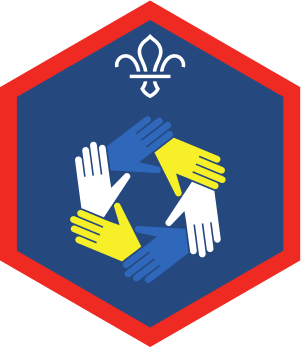
Heads or hands
You’ll need
- Soft balls
Before you begin
- Use the safety checklist to help you plan and risk assess your activity. Additional help to carry out your risk assessment, including examples can be found here. Don’t forget to make sure all young people and adults involved in the activity know how to take part safely.
- Run a quick game of ‘Marco Polo’ or similar to decide who’ll go first. The last person to say ‘Polo’ will be the first person to stand in the middle.
Run the activity
- Everyone should stand in a circle facing inward in the middle of the meeting space. The person going first should stand in the middle of the circle with the ball. This person may be swapped at any time during the game.
- The person in the middle should call ‘heads’ or ‘hands’ and throw the ball to a person in the circle.
- If the call was ‘heads,’ the person in the circle who is receiving the ball should catch it and throw it back. If the call was 'hands,' they should head the ball back. Do a few practice rounds and play slowly at first so that everyone gets it. The ball may touch the floor when it’s being returned.
- The person in the middle should then throw the ball to the next person along in the circle, calling ‘heads’ or ‘hands’ each turn. If someone returns the ball incorrectly once, they should go down on one knee. If they do it twice, they should go down on two knees. If they do it three times, they should sit down. Correctly returning the ball when in one of these positions lets players kneeling or sitting revert to the previous position (for example, someone sitting down who returns the ball correctly should swap back to two knees).
- When everyone is getting good at the game, the person in the middle should stop moving around the circle and start to throw to people in the circle at random. The game can also be sped up, and you could try playing without letting the ball touch the floor. Keep playing until everyone who wants has had a go in the middle.
Reflection
This can be a tough game for everyone to get their heads around at first. Just when you think you’ve got it worked out, a surprise throw or call could easily catch you out. Was it frustrating to hear one thing and to have to think about doing something else?
Safety
All activities must be safely managed. You must complete a thorough risk assessment and take appropriate steps to reduce risk. Use the safety checklist to help you plan and risk assess your activity. Always get approval for the activity, and have suitable supervision and an InTouch process.
- Active games
The game area should be free of hazards. Explain the rules of the game clearly and have a clear way to communicate that the game must stop when needed. Take a look at our guidance on running active games safely.
If anyone is struggling, have the person in the middle call out everyone’s name before throwing them the ball. Speed up or introduce new ways of returning the ball to make the game tougher.
Put out chairs in a circle around the group’s circle. If anyone returns the ball incorrectly, have them sit in the chair instead. They could turn the chair if they return incorrectly again.
If it’s difficult for everyone to do the opposite, reverse the game so that the person in the middle’s call is obeyed. Add more calls like ‘catch,’ ‘knee’ or ‘kick.’
All Scout activities should be inclusive and accessible.
Everyone should think up some new rules for the game together. There could be a call that prompts players to bounce or roll the ball back, for example.
Young people and young leaders should be able to run this game themselves once they get the hang of it. Let them do this whenever possible.


